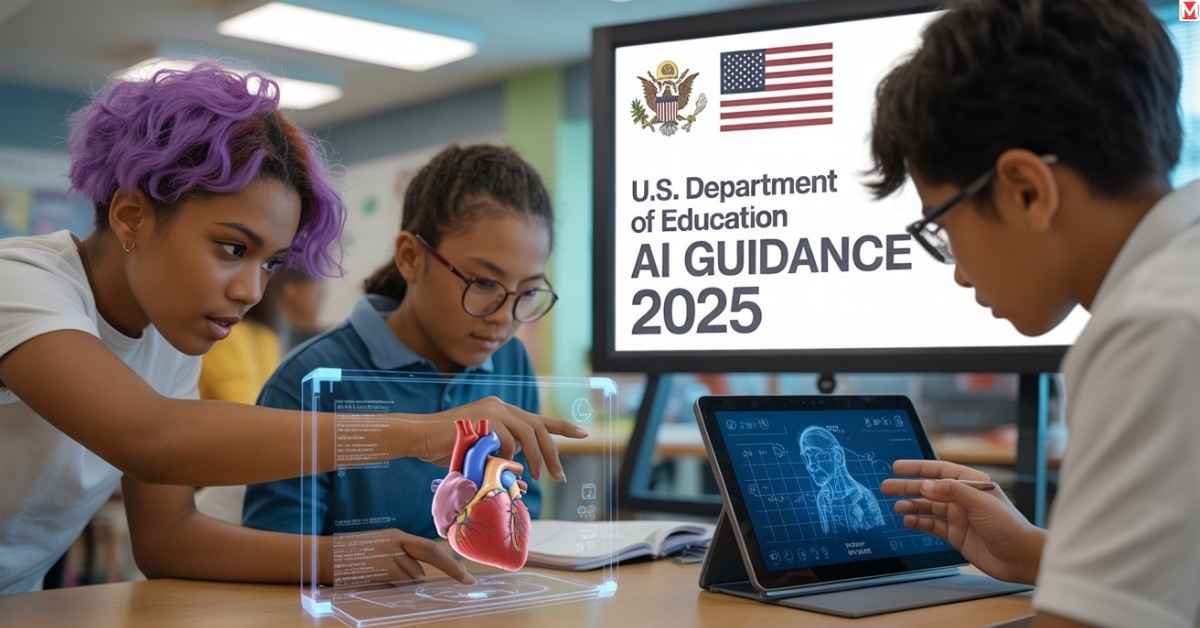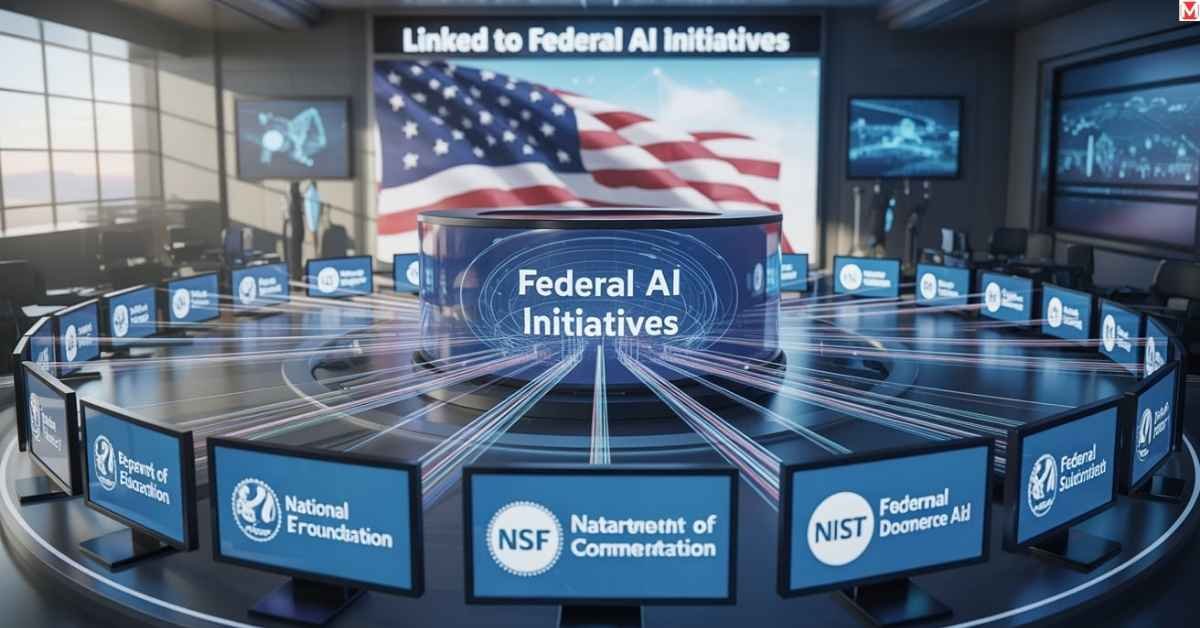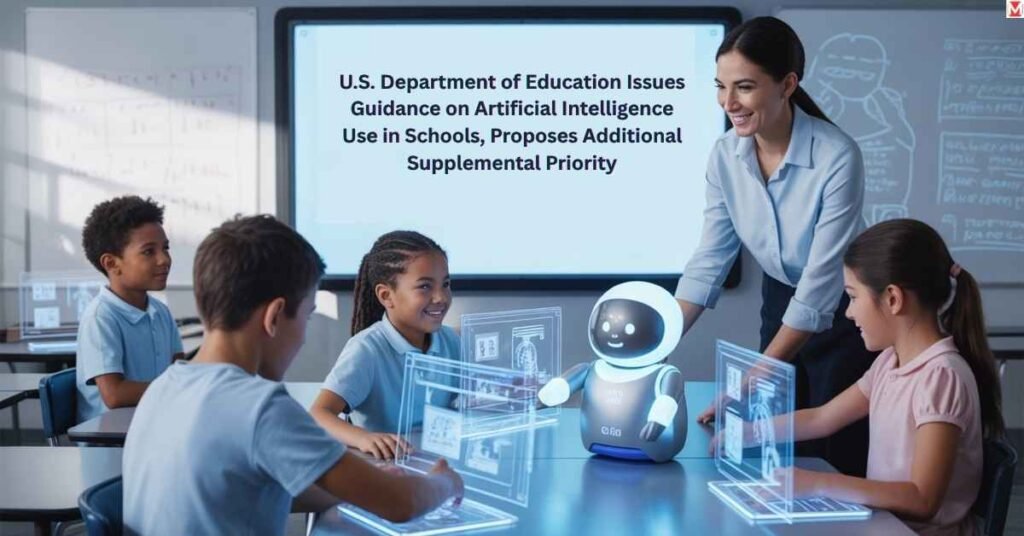
Artificial Intelligence use in schools has reached a turning point. The U.S. Department of Education just released groundbreaking guidance that will reshape how American classrooms integrate AI technology. Secretary Linda McMahon’s July 2025 announcement brings federal funding, clear rules, and new opportunities for educators nationwide.
This isn’t just another policy update. It’s a direct response to President Trump’s April 23 Executive Order on advancing AI education for American youth. The guidance comes with real money and practical steps that schools can take immediately.
The Dear Colleague Letter on AI outlines exactly how federal grant programs can support AI in classrooms. Plus, there’s a proposed supplemental priority that could unlock millions in discretionary grant competitions for schools ready to embrace educational innovation.
Approved Uses of Federal Funding for AI
Core Educational Applications
The U.S. Department of Education made it crystal clear: federal money can now support three major areas of artificial intelligence in education.
AI-based instructional materials top the list. Think adaptive learning platforms that adjust difficulty based on each student’s progress. These aren’t futuristic dreams anymore. Schools can use formulas and discretionary grants to buy software that creates personalized learning paths for every student.
Real classrooms are already seeing results. When students struggle with math concepts, Artificial Intelligence Use in Schools helps AI-powered platforms identify exactly where they’re stuck. The system then provides targeted practice problems until mastery occurs. This personalized learning approach works because it meets each student where they are.
Artificial Intelligence Use in Schools also includes AI-enhanced tutoring, which represents the second approved use. Virtual tutoring systems now provide 24/7 support that human tutors simply can’t match. Students get immediate help with homework, test preparation, and skill-building exercises all thanks to the growing Artificial Intelligence Use in Schools.
Funding Mechanisms
Federal grant programs already have the legal framework to support AI in schools. The guidance confirms that existing statutes and regulations allow these innovative uses without new legislation.
Formula grant eligibility means predictable funding streams for basic AI integration. Schools don’t need to compete for these dollars. They’re distributed based on student enrollment and demographic factors.
Discretionary grant competitions offer larger amounts for schools with ambitious AI plans. These competitive processes reward innovation and measurable outcomes.
Administrative Efficiency Applications
Beyond classroom instruction, artificial intelligence use in schools can streamline operations. Automated grading systems free up teacher time for actual teaching. Intelligent scheduling optimizes resource allocation across complex school systems.
Federal Student Aid (FSA) exemplifies this approach. They’re asking vendors how AI can detect fraud and improve service delivery for college-bound students.
Principles for Responsible Adoption

Privacy and Data Protection Framework
Responsible AI integration starts with protecting student information. The guidance emphasizes FERPA compliance and data minimization strategies both critical aspects of Artificial Intelligence Use in Schools.
Schools must implement consent protocols before collecting student data for AI systems. Artificial Intelligence Use in Schools requires that parents have the right to know exactly how their children’s information gets used.
Algorithmic transparency requirements ensure that AI decisions can be explained and audited. No black box systems that make unexplainable choices about student outcomes are acceptable under responsible Artificial Intelligence Use in Schools.
Stakeholder Engagement Protocols
Parent and teacher engagement isn’t optional. It’s mandatory for successful AI implementation.
Community forums help families understand AI benefits and limitations. Schools must provide opt-out mechanisms for concerned parents.
Teacher training on AI includes both technical skills and ethical considerations. Educators need hands-on experience with AI tools before using them with students.
Educational Integrity Standards
The guidance addresses growing concerns about academic honesty in the AI era. Clear policies help students understand appropriate Artificial Intelligence Use in Schools, especially in assignments.
Social media use in schools gets special attention. Artificial Intelligence Use in Schools ensures that students learn to identify AI-generated content and develop critical thinking skills for digital citizenship a key outcome of responsible Artificial Intelligence Use in Schools.
Proposed Supplemental Priority for AI in Education
Four Foundational Pillars
U.S. Secretary of Education Linda McMahon announced her fourth proposed supplemental priority focusing on AI and computer science education.
AI literacy integration starts with teacher preparation. Educators need foundational computer science concepts before they can effectively teach AI-related skills.
Student learning objectives span all grade levels. Elementary students learn basic computational thinking. High schoolers explore advanced AI applications in various subjects.
K-12 technology integration expansion requires significant infrastructure investment. Schools need reliable internet, modern devices, and technical support systems.
Professional development programs help educators transition from traditional teaching methods to AI-enhanced instruction. This includes data interpretation skills and differentiated instruction techniques.
Personalized learning enhancement through AI represents the ultimate goal. Students receive instruction tailored to their individual needs, learning styles, and pace.
| Priority Area | Focus | Target Audience | Expected Outcome |
|---|---|---|---|
| AI Literacy | Foundational Skills | All Educators | Competent AI Users |
| CS Education | Curriculum Expansion | K-12 Students | Prepared Workforce |
| Professional Development | Teacher Training | Educational Staff | Effective Implementation |
| Personalized Learning | Student Support | All Learners | Improved Outcomes |
Public Comment Process
The Federal Register published the proposed priority for a 30-day comment period ending August 20, 2025. Stakeholders can submit feedback through Regulations.gov, contributing to the future of Artificial Intelligence Use in Schools.
This AI rulemaking process ensures broad input before final implementation. Artificial Intelligence Use in Schools will benefit from diverse perspectives schools, parents, teachers, and technology companies all have opportunities to shape the final rules.
Public participation is a crucial step in establishing clear and effective Artificial Intelligence Use in Schools policies nationwide.
Linked to Federal AI Initiatives

Presidential Executive Order Alignment
President Trump’s Executive Order on advancing artificial intelligence education drives this entire initiative. The April 23 directive specifically called for enhanced AI education to maintain American competitiveness.
National economic development goals connect directly to workforce preparation through AI in postsecondary education. Students who understand AI principles will fill tomorrow’s high-paying jobs.
Cross-Agency Coordination
The Department of Commerce provides AI standards through NIST. The National Science Foundation offers research funding for educational AI projects.
Technology in education requires coordination across multiple federal agencies. This collaborative approach ensures consistent policies and maximum impact.
Federal Student Aid Modernization
AI fraud prevention in student aid programs protects taxpayer dollars and legitimate students. Advanced algorithms detect suspicious patterns in aid applications.
Service delivery improvements help students navigate complex financial aid processes. Chatbots provide instant answers to common questions.
National AI Strategy Integration
Educational policy now aligns with broader national AI objectives. Students graduate with skills that support American technological leadership.
Regional economic development benefits from schools that produce AI-literate graduates. Local employers gain access to qualified workers.
Artificial intelligence use in schools prepares students for careers that don’t exist yet. Flexibility and adaptability become core educational outcomes.
Implementation Success Stories
Early adopter schools provide valuable lessons for widespread implementation. One Tennessee district used AI-enhanced tutoring to raise math scores by 23% in just one semester.
California’s AI literacy pilot program reached 50,000 students across diverse communities. Results showed improved problem-solving skills and increased interest in STEM careers.
EdTech solutions work best when teachers receive adequate training and ongoing support. Schools that invested in comprehensive professional development saw the highest student achievement gains.
READ MORE ABOUT: National Science Foundation AI Research Programs
Frequently Asked Questions
How can schools access federal funding for AI projects?
Schools can use existing formula grants and apply for competitive discretionary grants. The Dear Colleague Letter confirms that current federal programs already allow AI-related expenses when they improve student outcomes.
What privacy protections exist for student data in AI systems?
All AI implementations must comply with FERPA requirements. Schools need parental consent for data collection, must use data minimization principles, and provide transparent explanations of how AI systems make decisions about students.
Do teachers need special training before using AI in classrooms?
Yes. The guidance emphasizes comprehensive professional development, including AI literacy, ethics training, and hands-on experience with educational AI tools before classroom implementation.



Pingback: How To Integrate Technology With Traditional Farming: A Farmer’s Guide To Smarter Growth